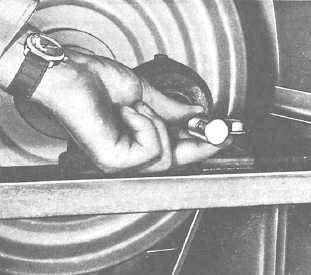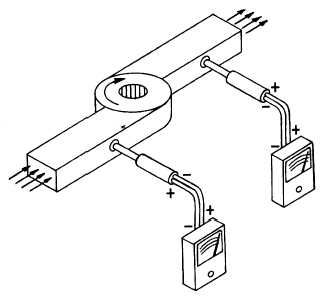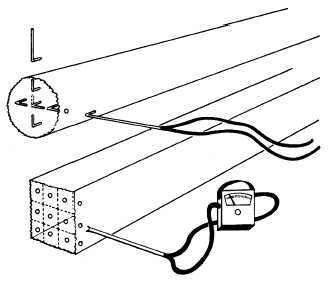
Figure 13-13. - Measuring fan rpm.

Figure 13-14. - Fan static pressure measurement.
test may not be necessary in the field; however, if it is, the results can be compared with the manufacturer's fan curve and system specifications to determine fan performance.
You can quickly locate problems caused by blockages in duct systems by performing static pressure readings. The total air volume in cubic feet per minute (cfm) for a fan can be determined by the following procedures:
1. Downstream of the air handler, establish a point along the duct that has the longest straight run and drill test holes into the duct. Holes should be far enough downstream from any elbows or from the fan discharge to minimize the effect of turbulence. The holes must be closed and sealed after the test is completed.
2. Take velocity pressure readings using a pitot probe and manometer or velometer. For rectangular ducts, velocity readings are taken at the center of equally divided areas. On round ducts, readings are taken across each of two diameters on lines at right angles to each other. (See fig. 13-15.)
3. Calculate the cubic feet of air per minute by multiplying the average velocity pressure in feet per minute found in the above reading by the cross-sectional area of the duct in square feet. Total airflow in cfm = Average velocity in fpm x duct cross- sectional area in square feet.
The results are compared with design conditions to determine performance. Measured cfm should be approximately equal to design cfm plus 10 percent to allow for leakage.
In the event that fan performance is not consistent with design conditions, the necessary adjustments or repairs should be made at this point in the balancing procedure. For example,

Figure 13-15. - Velocity pressure measurement.
Continue Reading
